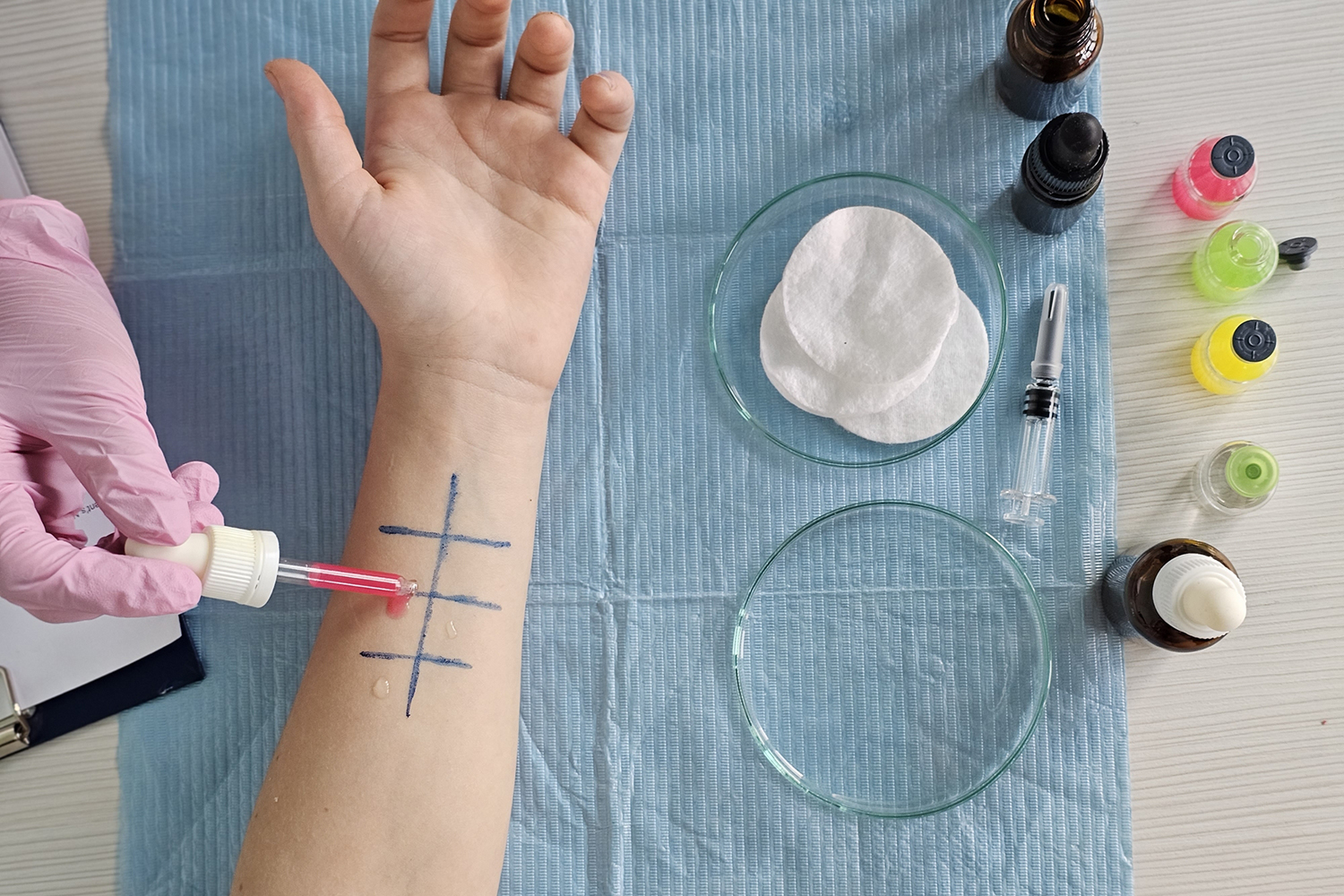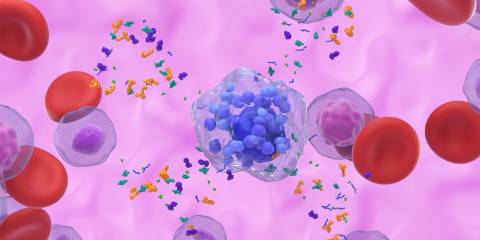It can be hard to believe that eating healthy food can cause unpleasant issues and make someone ill. But that’s exactly what happens when someone has histamine intolerance.
What is Histamine?
Histamine is a naturally released compound created by the body’s immune system. It’s perhaps best known for its role in wreaking havoc for those who experience allergies and anaphylactic symptoms.
What Does Histamine Do?
Though histamine gets a bad rap, it’s important for regulating digestion by triggering the production of stomach acid. Histamine is also necessary for the central nervous system, cognitive functioning, and the sleep-wake cycle.
Histamine is also pivotal to the body’s inflammatory response. It signals the immune system to prepare for action against potential invaders.
What Causes Histamine Intolerance?
But here’s where the problem starts: enzymes in the body eventually break down histamine, so it won’t build up in the blood. When the body doesn’t produce enough of these necessary enzymes, the breakdown of histamine is affected and histamine intolerance develops.
Meet HMT and DAO
Two of the enzymes that break down histamine are histamine N-methyltransferase (HMT), which is found in the central nervous system, and diamine oxidase (DAO), which is found in the digestive tract.
HMT is typically more influenced by genes, while DAO is produced in the intestines. If someone has experienced intestinal damage, the body’s production of DAO can be affected.
Conditions such as celiac disease, IBS, SIBO, leaky gut, and gluten intolerance, as well as medications like antidepressants, NSAIDs, immune modulators, antihistamines, and histamine blockers can lower DAO and contribute to the overproduction of histamine.
When low levels of DAO and HMT enzymes are in the body, histamine can run amok and histamine intolerance results. An individual begins to react to all sorts of foods and other harmless allergens.
Symptoms of Histamine Intolerance
Symptoms are broad and varied, making it particularly difficult to diagnose histamine intolerance.
One study shows that up to 55 percent of individuals with digestive issues also have histamine intolerance.
How do you know if you have histamine intolerance?
Here’s a list of some of the symptoms that can occur:
- Anxiety
- Bloating
- Cardiovascular issues:
- low blood pressure
- irregular heartbeat
- Diarrhea
- Dizziness
- Eczema
- GI disorders
- Headaches and migraines
- Hives
- Hormonal issues and imbalances
- Itchy skin
- Itchy tongue
- Leaky gut
- Menstrual cycle irregularities
- Nasal issues:
- congestion
- difficulty breathing
- runny nose
- sneezing
- Nerve-related issues:
- numbness
- tingling
- burning
- Rosacea
- Skin flushing
- Sleep issues
- Watery eyes
It’s important to note that histamine intolerance is not a food allergy, although annoyingly some of the symptoms appear the same.
Irregularity of Symptoms
Another frustration with histamine intolerance is the occurrence of symptoms. Issues seem to come and go with seemingly no rhyme or reason.
For example, you may eat a high-histamine meal in the morning and low-histamine foods for lunch. Symptoms begin a few hours later in the afternoon, making you think it was something you had for lunch.
In reality, it was the morning meal that put you over your histamine threshold.
Histamine in Foods
Almost all foods and beverages contain histamine, even healthy ones. The presence of histamine increases as a food ages, ferments, or spoils, which is why leftovers can be a problem for those with histamine intolerance.
Common Food Triggers
This list represents some of the histamine-rich foods and beverages out there.
Many of these items are considered high-histamine; others are histamine liberators, which means they trigger the body’s release of histamine; and a few inhibit or block the action of the DAO enzyme.
When figuring out which foods trigger histamine intolerance, start by avoiding the following.
- Aged and fermented cheeses
- Avocados
- Bananas
- Canned fish:
- tuna
- mackerel
- Chocolate
- Citrus fruits
- Cured meats:
- lunch meat
- bacon
- hot dogs
- Dried fruit
- Eggplant
- Fermented items:
- buttermilk
- cottage cheese
- kefir
- kombucha
- sauerkraut
- sour cream
- soy sauce
- yogurt
- Nuts (including peanuts)
- Pineapple
- Shellfish
- Strawberries
- Tea:
- black
- green
- white
- Tomatoes
- Vinegar-based and pickled foods:
- mustard
- pickles
- ketchup
It can be depressing to realize all of the foods that can contribute to histamine intolerance. But keep in mind that everyone has different food triggers, and not everyone with histamine intolerance will react to all of the above.
There are blood tests that check for histamine and enzyme ratio levels. But if you can’t or don’t want to get your blood tested, following a histamine-reducing diet is another way to see if histamine is affecting you.
Low-Histamine Foods
Here are some lower-histamine items to consume:
- Berries:
- blackberries
- blueberries
- raspberries
- Coconut water (fresh)
- Cooked eggs
- Dairy substitutes:
- coconut milk
- hemp milk
- rice milk
- Fresh fish, meat, or poultry
- Fresh fruit:
- apples
- cantaloupe
- grapes
- kiwi fruit
- mangoes
- pears
- pomegranate
- watermelon
- Gluten-free grains:
- amaranth
- millet
- quinoa
- rice
- teff
- Herbal teas
- Oil (olive or coconut)
- Vegetables:
- artichokes
- arugula
- asparagus
- Brussels sprouts
- carrots
- cauliflower
- potatoes
- rutabagas
- sweet potatoes
- turnips
Avoiding Triggers
There’s no doubt that a histamine-reducing diet can be restrictive, but it does help manage and relieve symptoms. Follow it strictly for two to four weeks.
Reintroduce the high-histamine foods you excluded, one at a time, to see if problematic symptoms return. If a food causes no reactions, add it back to your diet.
It helps to keep a food journal to track re-introduced foods and any symptom reemergence.
Precautions
Keep in mind that a histamine-reducing diet should not be followed long term, since it reduces healthful nutrients that come from eating a wide variety of foods.
Consult with your healthcare provider before beginning any elimination diet to insure proper nutritional intake. And don’t stay on a histamine-reducing diet for too long, especially if it’s not working.
Treatment
The time it takes for the body to eventually lower its histamine levels and restore healthy equilibrium varies greatly, from a few weeks to many months.
-
Medicines and Supplements
Some healthcare providers may recommend over-the-counter or prescription medications to control histamine amounts in the body.
These include epinephrine injections, corticosteroids, antihistamines, and supplements (herbal, vitamin, mineral).
DAO supplements can offer relief, as well as vitamin B6, which is a cofactor for DAO enzyme production and has been shown to improve DAO levels.
-
Comorbidities
Histamine intolerance is typically not an isolated condition. It generally occurs along with other health conditions, particularly gastrointestinal issues.
When these other conditions are treated and a person gets better, histamine intolerance also improves.





